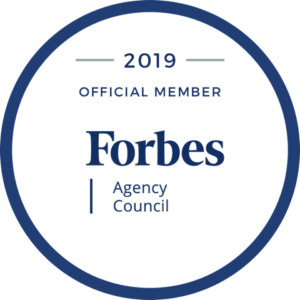by Beth Levine | Dec 2, 2014 | public speaking, quote
The thing about transparency is that it shows. Period. When you’re open and direct, it shows; when you’re obtuse or avoidant, it also shows.
The bottom line with transparency is this: If something is true and real and you’re thinking it, feeling it, or wanting it, then communicate it. When a batter squares to bunt, people know what’s coming. You might as well be the leader or speaker who also lets people know what’s coming. Be straight up with information as well as with your feelings and reactions.
[Excerpted from Jock Talk: 5 Communication Principles for Leaders as Exemplified by Legends of the Sports World, http://amzn.to/1vkcxjz]
by Beth Levine | Sep 30, 2014 | Just Mouthing Off, quote
“Dignified comportment” – classy, respectful, present, unflappable.
In the months leading up to Derek Jeter‘s much-anticipated retirement on Sunday, nearly all media coverage has mentioned, if not focused on, Jeter’s clean record of behavior. He’s never made trouble, nor has he ever made any outrageous or controversial comments. In 20 years. In New York.
In The New York Times Sports Sunday this past weekend, Dan Barry and Ken Schwencke wrote a piece entitled “With His Words and Deeds, Jeter Never Entered Foul Territory.” In it, they wrote, “Jeter’s ability to maintain a posture of sustained inscrutability – or, if you must, dignified comportment – has extended especially to the spoken word.”
“In a major league career that dates to the Clinton administration’s first term … inquiring reporters have gathered around Jeter in the clubhouse thousands of times. He has maintained eye contact, answered nearly every question posed to him – and said nothing. This is not a complaint, but rather an expression of awe; of admiration, even.”
Even – or especially – in difficult times, when you might be facing criticism or uncomfortable questioning or dealing with bad news, think of Jeter’s example. Dignified comportment. Turns out, it’s career-defining.
by Beth Levine | Aug 19, 2014 | preparing for a presentation, quote
“Vision trumps all other senses.”
Those are the words of Dr. John Medina, a renowned molecular biologist. I have become fascinated by his book, “Brain Rules: 12 Principles for Surviving and Thriving at Work, Home, and School.”
According to Medina’s work, we remember pictures. He claims that if we hear a piece of information without a picture as visual support, then three days later we’ll remember only 10% of it. However, if we hear a piece of information with a picture to support it, then three days later we’ll remember 65%.
Medina also asserts that we remember pictures much better than we remember text, because our brains see words as lots of little pictures, making the reading part less efficient than simply looking at a picture.
The implication for business presentations? Images beat words. Those dense text slides you’re using or seeing might not be providing the “visual support” benefit you were hoping they would have.
Try images – pictures, simple graphics, or even one-word slides. It takes some forethought and advance planning, but your audience will better remember what you were trying to impart to them. And if you spare them the multi-bullet-pointed slides that have become ubiquitous, they are likely thank you!
by Beth Levine | Mar 19, 2014 | public speaking, quote
“If you can’t write your message in a sentence, you can’t say it in an hour.”
Dianna Booher, Communications Consultant
There may be a few different ways to interpret Booher’s quote, but to me it says … do the heavy lifting so your audience doesn’t have to!
In other words, when you sit down to prepare for a talk or presentation, take a few moments to do some critical thinking about what you want your messages – or your main points – to be. If you don’t, you could end up talking and talking, as Booher suggests, and never getting anywhere.
The heavy lifting is simply a matter of preparing and packaging ahead of time. To find your message, ask yourself what your capture or summary points are. What are the statements that capture and convey the importance, significance or value of what you’re talking about? They should be one sentence each.
By writing your message in a sentence, you will be more efficient with time – yours and your audience’s – and you will have a much better chance of getting your point across to your audience.
by Beth Levine | Jun 4, 2012 | quote
“Everything should be made as simple as possible, but not simpler.”
– Albert Einstein
by Beth Levine | Aug 30, 2011 | Just Mouthing Off, quote
I am not young enough to know everything.
– Oscar Wilde
We never know everything. We never will. Even experts get stumped. There are a lot of great questions. Yet so many people say, “I get so nervous before a presentation because I’m afraid I’ll get asked something I don’t know.“ So?
What you get asked can’t hurt you. What you say in response can. Be comfortable in not knowing something, it’s human. Be ready to openly admit it and offer to help find the answer, or to help find someone who knows the answer. It’s more authentic, and therefore more appealing. Even subject matter experts explore with, and learn from, their audiences. And it’s best when the presenters are completely transparent about their limitations; trying to cover up or make something up is also quite transparent, so don’t go there and risk compromising your credibility unnecessarily.
Just because you’re the speaker does not automatically mean you’re omniscient. “I don’t know, I can find out for you” is a brilliant answer!



